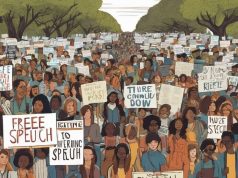The recently published article ‘Modern institution or madrassa – Sir Syed‘s fight for Aligarh Muslim University’ by Mohamed Wajihuddin in The Print, qualifies to portray fuzzy imagery of modern madrasa graduates. It will be more exciting to read his book– however, in this piece of writing, the author makes a poor case on every count throughout. He seems to know no difference between a fact and an interpretation of various sources of ‘reality’. The author is failing to simply understand the physicality of attire, a cultural expression. Ashish Nandy, in his peculiar analytical way about the psychology of xenophobes, explains how it is that they want to see everything of their choice and are acutely disenchanted of any form of difference.
In the hurriedness of fixing that choice, they can opt any means, co-opt any measures and may take any brutal route. He also takes pity on those who stay in the them-us category and are inherently incapable to come out of this psychological state (disorder). And Modernity has caged in such binaries that its actors are its prisoners and lifetime subscribers. We make efforts to construct realities and yet tend to forget that ‘the reality is a shared hallucination’.
The author visualizes the glaring visibility of sherwani and daarhi (Beard) culture in the campus life of Aligarh Muslim University, especially by madrasa students, which needs to be looked at differently as their entry into the institution is hindering the ‘modern’ notion of education and educational culture, viz., scientific temperament. One must muse that how a madrasa student can become an obstacle in acquiring scientific techniques of learning? Does the inherent quality of being modern and progressive lie in a particular dress code and, thus, an outer attire, grown beard and traditional culture can hinder anyone from being scientific and modern? Or has it to do with the mental and cognitive processes of a person?
If intellectual rigor has to come with this logical tool to conclude madrasa graduates, then by this way, every person with clean shaved and ‘modern’ attires must be a scientist and the true representative of the civilizational ethos of India! The act of engagement with modernity and modern nuances demands to be alert, reflective and careful; not to be blindly submissive. Can’t we think of a fusion of different times and spaces where traditional modernity can come into play? The very project of making Indian Muslims ‘modern’ does not resonate with what the author is proposing.
The lens of seeing and describing any ‘reality’ needs to be re-examined if one assumes that the madrasa students hinder the possibility of the progression of a university. Furthermore, how many students at Aligarh Muslim University wear sherwani and how many madrasa students are wearing sherwani is a quest. Linking and portraying their identity as a far backward group of people is a nonprogressive and nonaccommodative notion in itself. This outlook is incompatible in line with the ‘Idea of India’; where diverse cultures, traditions, religious practices, and varied customs have been enjoyed for ages. If we put AMU, madrasa, sherwani and beard in a sequence, a terrible association can be drawn. Nonetheless, this sequencing is not only appropriate but also does not convey a bigger picture (beyond the good-bad binary) of reality.
The madrasa students do not come on mercy but they fulfill the eligibility criteria and qualify for the admission test. Madrasa graduates are at AMU and many universities as lecturers in different departments and services in bureaucracy, civil services and other developmental fields. Such success stories are becoming a new normal with the growing times.
Chandrabhan, an alumnus of Jamia University in Delhi and faculty in the University of Delhi says, “I learned a lot from my madrasa friends there. About Faiz, Ghalib and Mir. About the Quran and Prophet’s biographies. It was a fusion of two horizons which opened up a new sky of thinking and knowledge for me”. He adds, “I am sure it was the same for my friends who learned English and read ‘A Diary of Young Girl’ amongst other things. We debated. And there was not any theme about which we did not discuss. From religion to many meanings of modernity and many facets of secularism. About Maulana Azad, Gandhi, Nehru and Ambedkar. They have a special place in my heart who has played a crucial role in my life to sensitize me towards minority concerns in this country. Which had not have been possible without my friends from Madrasas– the Qasmis, the Falahis, the Islahis, the Nadvis and others”.
As for as sectarian tussle among Muslims is concerned, one must argue that the Islamic practices are not monolithic in nature as it stalls a range of variety and diversity. Many schools of thought exist and are practiced. Both Shias and Sunnis offer namaz in the same mosque of the university despite their ideological differences and ways of practice. The reported event maybe just a rare one among a few students, which can’t be termed as the dominant practice of the campus.
The tone of the article does not welcome the madrasa students and feels unhappy with the efforts made by the university in past years to open the doors for madrasa graduates to study hard and break the stereotypes weaved around them. The language used by the learned author does not qualify in full.
He wrote “Zameer Uddin Shah is responsible for opening AMU’s gates wide for the maulvis. And “infiltration of madrasa students into AMU for quite some times which led to the floodgates being opened for the Maulvis”. The word ‘Maulvis’ is referred to traditional clerics. Words and phrases such as ‘responsible’, ‘infiltration’ and ‘floodgates’ carry negative connotations.
It is true that Sir Syed’s opponents predominantly were religious scholars but the many supporters were from the same background too, like Hali, Shibli and many other. Therefore, students of madrasa can’t be alienated because of their ideological inclination toward Sir Syed’s opponents. This pre-conceived notion is strongly influenced by the grand narrative ‘ye Babar ki aulaad hain’ (These are the children of Babar)
Let’s not take up any assignment to blow the whistle with a subjective individual interpretation of contested realities. Let us not be in hurry to be conclusive to any ‘reality’. Let us be realistic and pluralistic.






